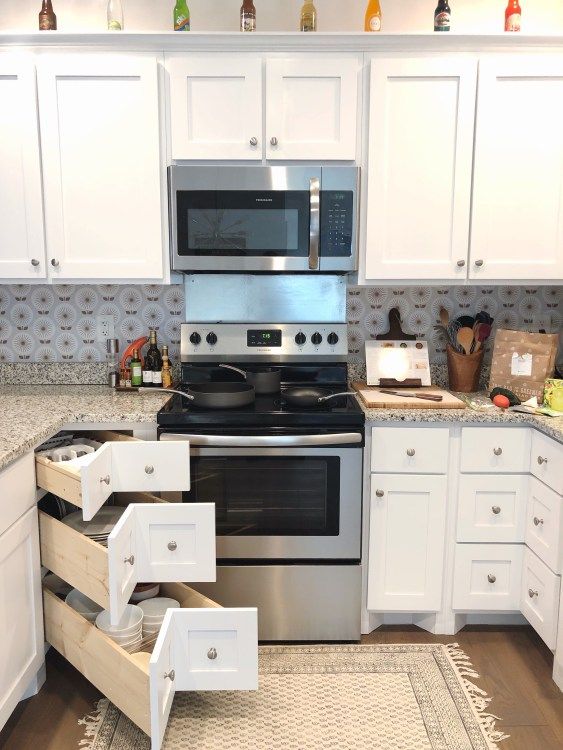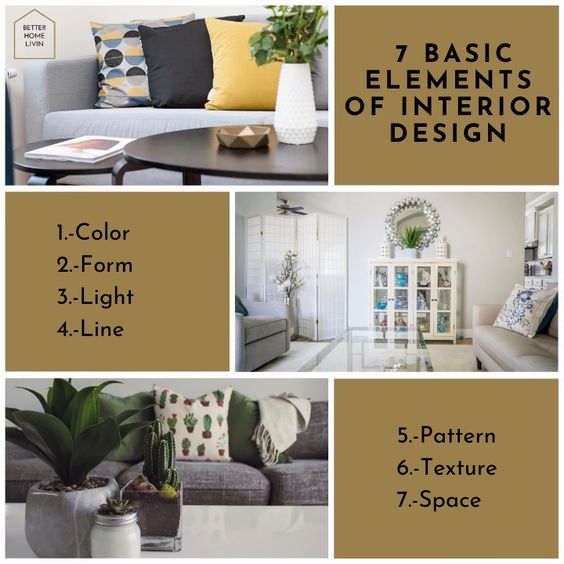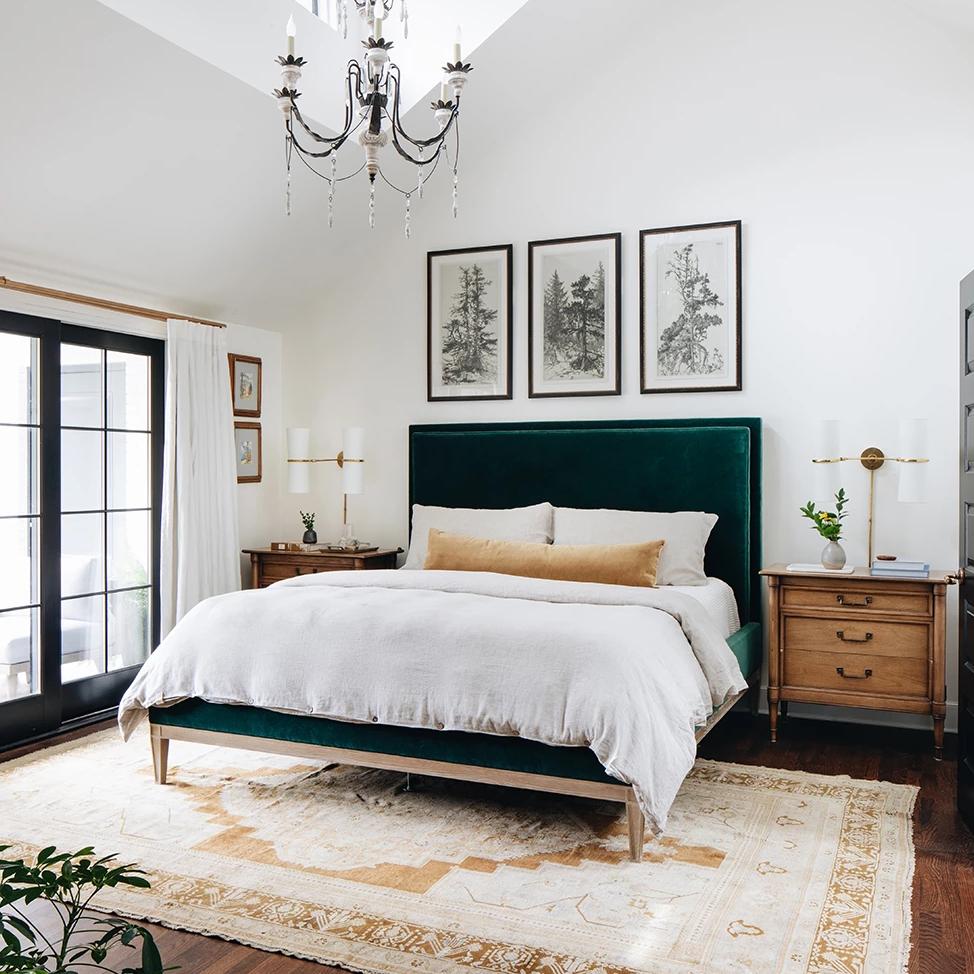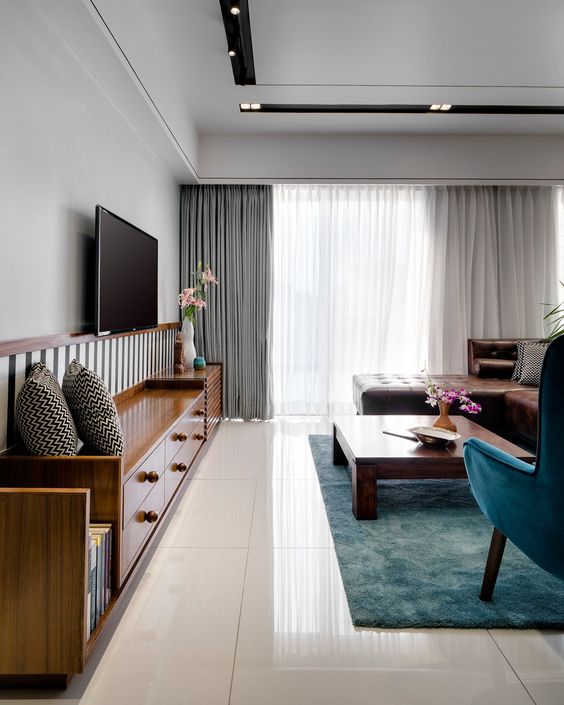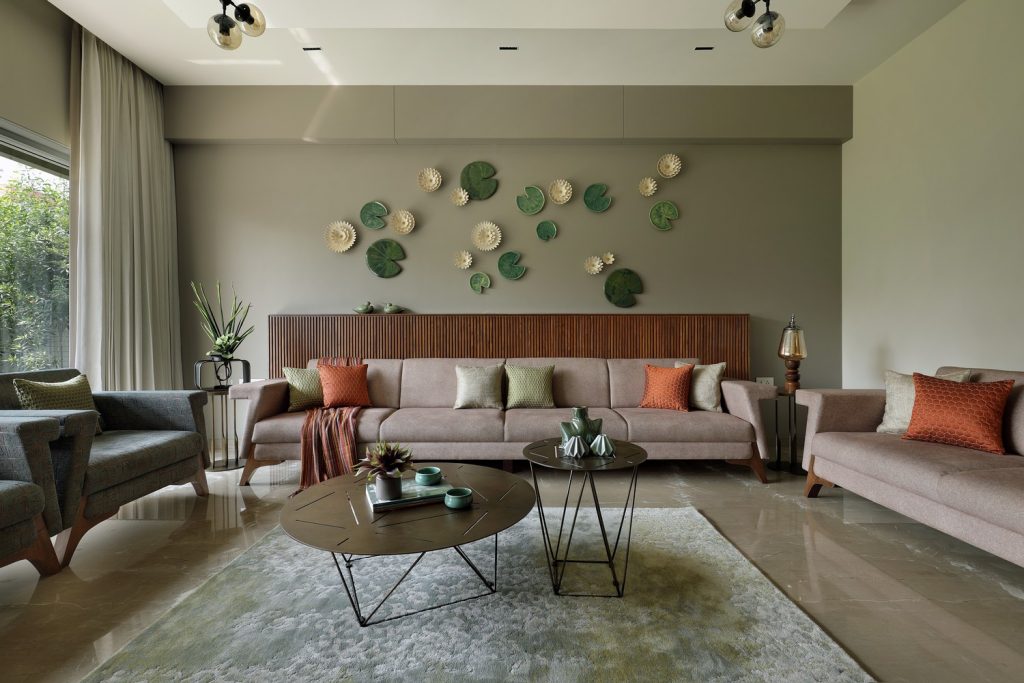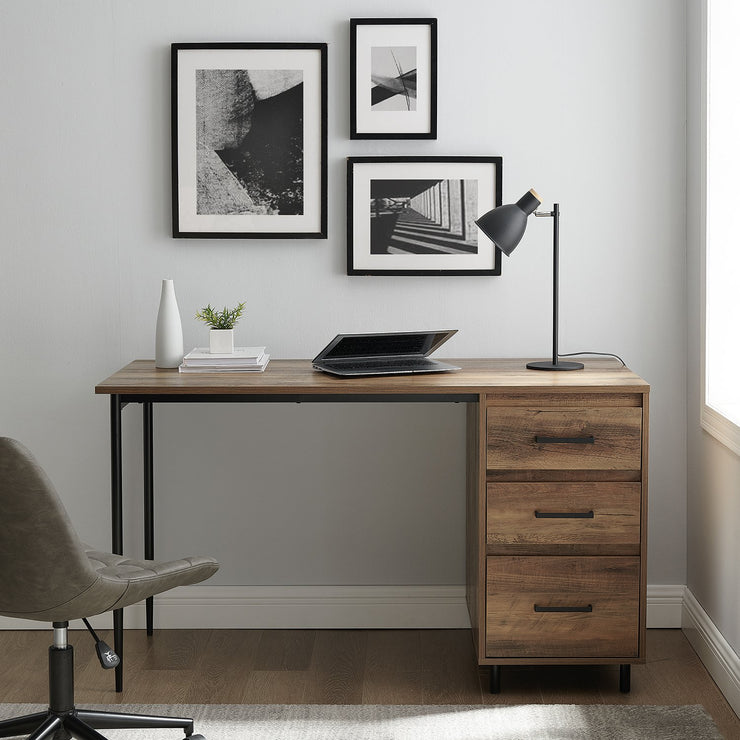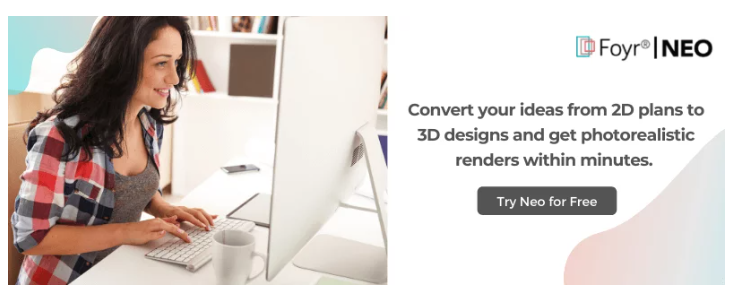Form in Interior Design
‘Form follows function’- a mantra parroted by interior designers for the past 120 years was coined in the 19th century by Louis Sullivan, the American architect, in his famous article named ‘The tall office building artistically considered.
‘Since then, the phrase ‘form follows function’ has followed in the interior design schemes of interior designers. The most successful professional interior designers understand the relationship between form & function and how form follows function in the interior design process.
Image Credit: pinterest.com
Now, when you take a step into your interior design project, remember that both- form & function are equally important. As it is said, interior designing is a lot like cooking; you cannot just throw a bunch of different ingredients together and expect amazing results.
Basic Elements of Interior Design
You need to learn the basic rules to build better, and that only comes with understanding what makes each part of an interior design special. Your home is your private refuge, a place where you can retreat and be yourself. That’s why everything has to be just right – form, color, light, line, pattern, texture, and space – the seven elements of an interior designing process.
Read also – Interior Design Basic Concepts, Elements and Principles
Image Credit: pinterest.com
1. Color is the use of different values of color to produce patterns. These patterns can be in sets or used individually.
2. Form is the indication of three-dimensionality by the sculptural use of two-dimensional shapes that interact with textiles, lighting, and all other design elements.
3. Light is an illumination that comes from a lamp or a window. It can be direct, indirect, or reflected light.
4. Line is any mark on a surface that divides space into two or more areas to create a visual pattern that creates form. The line can also be used as a way to separate one area from another by creating borders for rooms in the design being examined.
5. Patterns created through these lines create specific color and lighting values around each area that can be separated from another area as well as define it as part of a larger whole in an interior design environment.
6. Texture can provide variety via repetition of common elements within spaces or across spaces and their boundaries, creating accents and defining different areas of an interior design space within the overall integrity of the design concept.
7. Space refers to the use of undivided space or the use of multiple spaces, which form the focus for the overall interior design.
What Is Form?
The form in interior design is an element of art. Form is the backbone of any interior design, which is the prime element in any design project. It helps to create an external impact on things like patterns, colors, and textures.
To put it simply for you, form in interior design is broadly referred to as the three-dimensional outline of a thing or an object enclosed inside. It is not the thing in itself, but it is a representation in space and three units or dimensions.
Creating the form is what interior designers do and can choose from a huge range of shapes, color schemes, materials, and textiles to create original or delicate forms. Form in interior design includes:
- Length, breadth, height, mass, and even volume of the room
- Existence of light and dark: the presence of shades and shadows on the face & surface of objects
Let’s see how many types of forms in interior design are there and how form follows function in interior design.
Read also – How To Choose Materials for Interior Design?
Types Of Forms In Interior Design
- Inorganic or Geometric form: It gives a clean and controlled look. It is artificial and uses geometric shapes and designs to give a modern, sophisticated & elegant look. It makes use of non-living forms.
- Organic form: It is more inspired by nature. They do not have exact patterns and dimensions, giving it a natural look.
- Open forms: These are the outlines of objects in the home design that can be seen with the naked eye. For example, a showpiece.
- Closed forms: These are the outlines or forms that are not visible to the naked eye. For example, a closed wooden cabinet in your living space.
Before we get into why it is important that form follows function, let us understand what exactly the meaning of function is in interior design. The function essentially means laying out the open-plan clearly according to the intended functionality of the place rather than focusing just on aesthetics or ornamentation.
For example, a kitchen is placed adjacent to the dining area to ease the movement of food.
Now imagine, if the dining area is on one floor and the kitchen is on another, how cumbersome the process of setting up the table will become every day. Even if you have the most beautiful kitchen in New York loaded with modern accessories, this mere design mistake will rip off the whole charisma of your house, wouldn’t it? Thus, the functional requirements of the space dictate the form in interior design. So yes, it is important that form follows function.
Read also – Accessories in Interior Design
8 Reasons Why Form Follows Function In Interior Design
1. Does not clutter the space
You should invest in home decor wisely and only purchase the pieces that add to the usability of the space. For example, adding extra showpieces or rugs might be unnecessary in the living room. While a showpiece can spruce up the space instantly, however keeping multiple showpieces can make the space feel crowded.
2. Makes it liveable
Now imagine if you have a habit of waking up every morning and going to the kitchen first. But if your kitchen is placed far from your bedroom, you might not find it comfortable doing this every day when you wake up. You would not want to continue living in the same home.
Read also – 9 Amazing Master Bedroom Ideas
Image Credit: stofferhome.com
3. Makes the property more valuable
Creating properties having functionality and not just aesthetics adds more appeal to the buyers. A property that has a well-thought floor plan and aesthetics that meet the functional requirements of the space act as value pushers in the market.
4. Functionality remains unchanged with time
The aesthetics or ornamentation of the property keeps changing with the changing times. However, the functionality of the space is unlikely to be changed so easily. So focussing on the functionality of the space rather than on accent pieces will add more value to your property.
5. Makes the space usable
Imagine you have a kitchen that is not efficiently designed; for example, if you have wall cabinets not designed for your height, then storage and everyday cooking will become a hassle.
6. Makes movement efficient
The living room is probably the most used room in a home. If your living room is crowded with furniture or showpieces so much so that it gets in the way of you walking around, it will make it difficult for you to move efficiently in your living room without hurting your toe.
Read also – 14 Best Living Room Interior Design Ideas
Image Credit: pinterest.com
7. Saves money
Focussing on functionality rather than making the place pretty can help reduce the expenditure on unnecessary ornamentation.
8. Makes it appeasing to the visitors
If you are designing a home wherein the dining room would be used for playing board games with your friends, then you would naturally need a bigger dining table. Such a setup would not only help the host in accomodating the extra people, but it will also make the guests feel welcome.
How to Prioritize Function Over Form in Design?
The space you design is like a blank canvas to you. As an interior designer, you decide what goes where to make the space usable according to its functional requirements. Sometimes your desire to create the perfect aesthetic can get in the way of its function. Let us see some design tips on how to prioritize function over form in interior design.
1. Begin by creating the functional floor plan and build from there on
For example, if you are designing a house, start by carefully laying out the functional floor plan taking into account the positioning & sizing of the rooms like living room, kitchen, bathrooms, bedrooms, etc. Then start by carefully choosing the home decor. Choose a piece of furniture if it fits your usage. Do not buy a sofa if it cannot accommodate a sufficient number of people no matter how good it looks.
2. Pick the pieces in order of importance
Remember the ‘form follows function’ rule to decide what is important. For example, finding the right furniture for the living room can be tough. If you watch television with your kids, seating becomes a top priority. Maybe you want a small reading nook for curling up with a good book.
Or perhaps you want a spacious look that’s ideal for entertaining friends. Overall, creating the perfect living room comes down to choosing the pieces that best suit your family and lifestyle – so the conversation doesn’t stop when everyone’s feet hit the floor.
Read also – 20 Best Furniture Brands To Upgrade Your Home Interiors
Image Credit: usinestudio.in
3. Be detailed in your planning
When you are deciding on a piece of furniture, check what texture, size, the material it should be of. Go granular as much as you can. For example, when choosing a chair, check how comfortable it is to sit on. Or when choosing a dining table, check how many people it can accommodate. Or, when choosing a desk, check if it is able to fit your work style.
Read also – How To Choose the Right Fabrics for Interior Design?
Image Credit: walkeredison.com
4. Be considerate about cost
Anything valuable need not always be costly. While planning a space, decide if a piece of furniture or any other home decor item is needed to align with the form follows function principle. Interior decoration should not be burning a hole in your client’s pocket. Thus invest more intelligently in the items that are needed and will be useful in the long run as well.
Interiors are the places where we live, gather, create memories, and define who we are. The quality of these memories is strongly influenced by the quality of the space in which they happen. The form of your design essentially refers to the purpose of the design. To obtain a good form, make sure that all of the interior design components are employed effectively and blended in the proper proportions.
If you have the right business tools, each stage of the interior design process will be easier and more efficient. Foyr Neo is a one-stop-shop for all your design needs. The multifaceted design software has so many features to choose from that it makes it easier to visualize your design ideas more effectively.
- 60K + ready to use products
- Build Floor Plans, edit in 3D
- Drag and Drop Interface
- 4K Renders in minutes
Furthermore, it doesn’t take up a whole lot of space due to its incredible cloud computing feature. It saves time and money on licensing. Anyone can create absolutely remarkable home designs with these design tools. Foyr Neo is now available for a 14-day free trial, allowing you to explore the potential of infinite creation.









